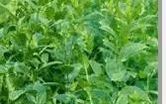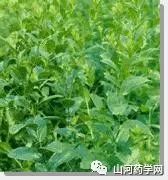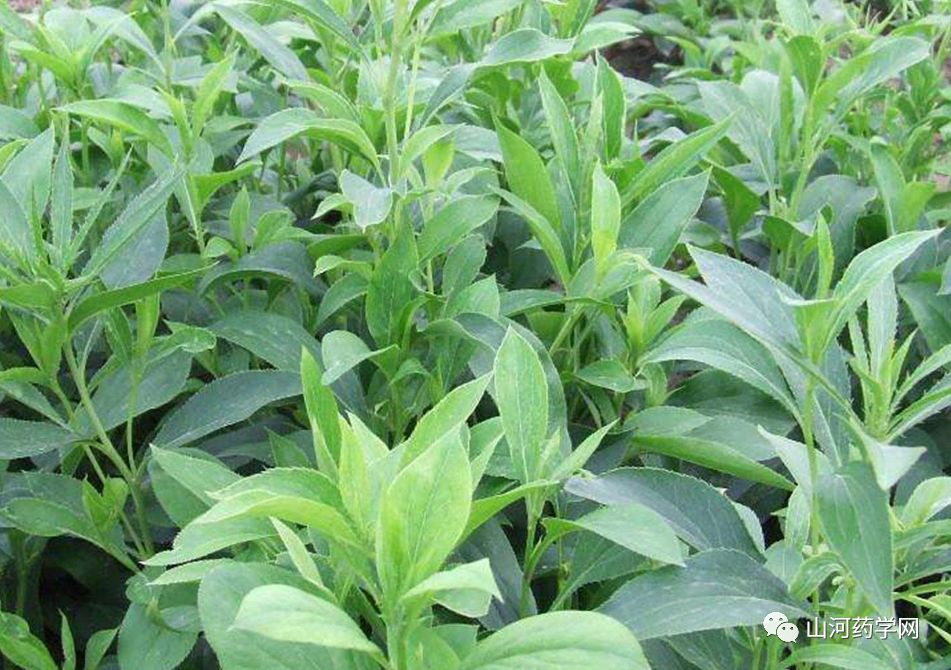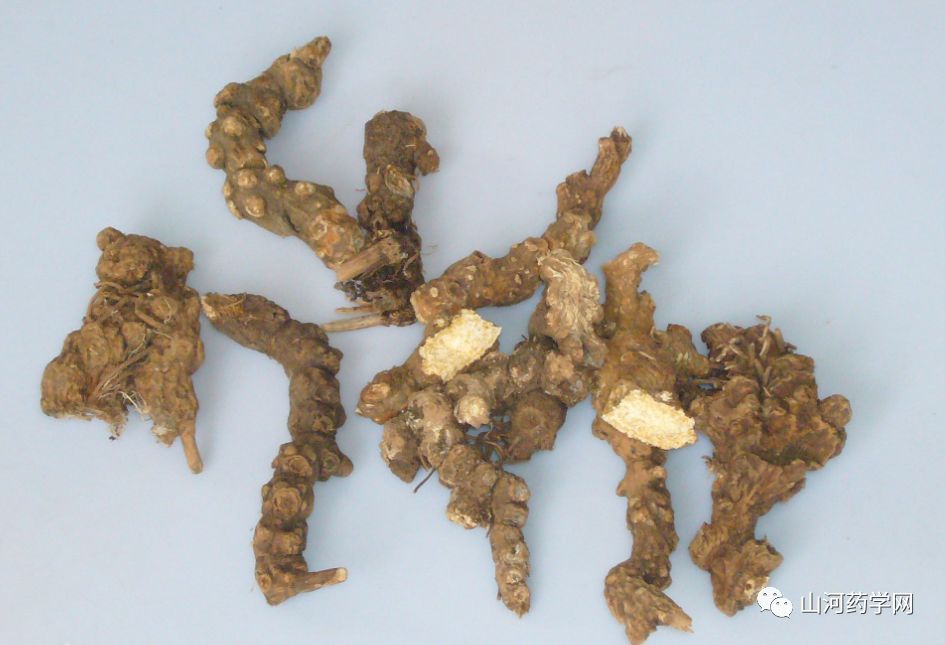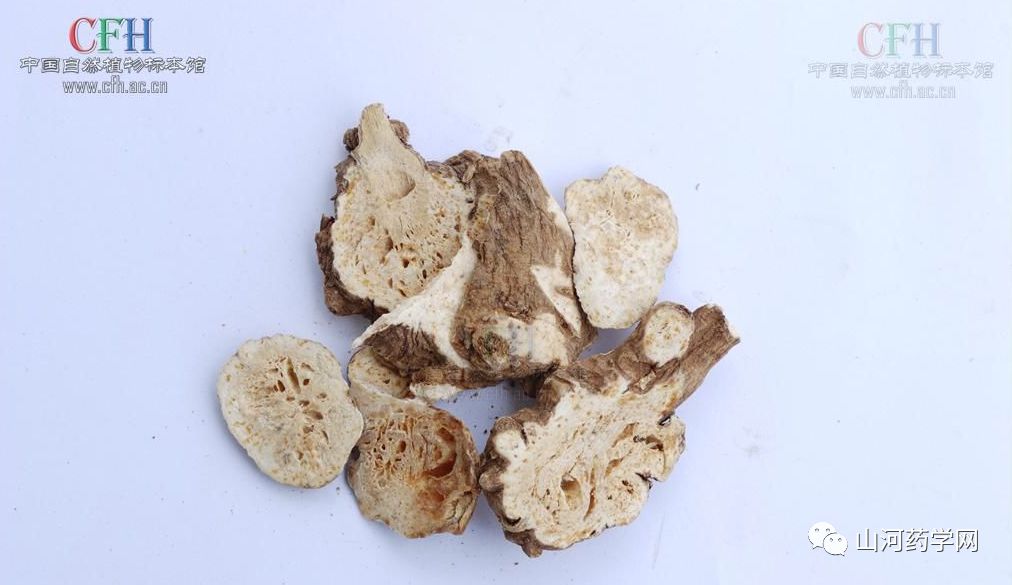| Cang Zhu Cānɡ Zhù | |
|---|---|
|
|
|
| Alias | Chi Zhu, Qiang Tou Cai, Ma Ji, Qing Zhu, Xian Zhu, Shan Jing |
| Functions | Dries dampness and strengthens the spleen, dispels wind and scatters cold, brightens the eyes. Used for abdominal distension, diarrhea, edema, beriberi, rheumatic pain, wind-cold common cold, and night blindness. |
| First Recorded In | Shen Nong Ben Cao Jing |
| Toxicity | Non-toxic |
| Meridian Affinity | Stomach Meridian, Spleen Meridian |
| Nature | Warm |
| Taste | Pungent, Bitter |
(Cang Zhu)
Category:Herbs for Transforming DampnessMedicinal Part:RhizomeHerb Characteristics:Irregularly bead-like or nodular cylindrical shape, slightly curved, occasionally branched, 3-10 cm long, 1-2 cm in diameter.Surface gray-brown, with wrinkles, transverse grooves, and residual fibrous roots, the top has stem scars or residual stem bases.Firm texture, cross-section yellow-white or gray-white, scattered with numerous orange-yellow or reddish-brown oil chambers, exposed for a while, can yield white needle-like crystals.Distinctive aromatic scent, slightly sweet, pungent, and bitter taste.Harvesting and Processing:Harvest in the autumn, wash off dirt, dry in the sun, and remove fibrous roots.Morphological Description:Perennial herb.Rhizome enlarged and nodular.Stem height 30-50 cm, unbranched or slightly branched at the top.Leaves leathery, without petioles, inverted ovate or long ovate, 4-7 cm long, 1.5-2.5 cm wide, entire or 3-5 pinnately lobed, apex short-pointed, base wedge-shaped to round, margin with discontinuous spiny teeth, upper leaves lanceolate or narrowly elliptical.Capitulum inflorescence terminal, about 1 cm in diameter, 1.5 cm long, with leaf-like bracts at the base, lanceolate, nearly equal in length to the capitulum, pinnately lobed and spiny; involucre cup-shaped; involucre bracts 7-8 layers, with fine hairs, outer layer long ovate, middle layer rectangular, inner layer lanceolate; tubular flowers, white.Achenes densely covered with silvery-white soft hairs; pappus length 6-7 mm.Ecological Environment:Grows in shrubbery and grasslands on hillsides.[Properties and Meridian Affinity]Pungent, Bitter, Warm.Enters the Spleen, Stomach, and Liver Meridians.[Main Functions and Indications]Dries dampness, strengthens the spleen, dispels wind, scatters cold, and brightens the eyes.Used for abdominal distension, diarrhea, edema, beriberi, rheumatic pain, wind-cold common cold, and night blindness.1. Pale complexion and poor appetite.Use 1 jin of Cang Zhu, 0.5 jin of Shu Di Huang, and 5 qian to 1 liang of Gan Jiang (5 qian in summer, 1 liang in winter), grind finely, form into pills the size of a walnut.Take 50 pills each time, with warm water.2. Preference for raw rice (disinterest in cooked food, loves to chew raw rice, emaciated and pale, ultimately unable to rise).Soak Cang Zhu in rice washing water overnight, dry, crush into powder, mix with steamed cakes to form pills the size of a walnut.Take 50 pills before meals, three times a day, with rice soup. Recovery in about half a month.3. Abdominal cold and weakness, inability to eat, food not digesting.Use 2 jin of Cang Zhu and 1 jin of Qu, fry into powder, mix with honey to form pills the size of a walnut.Take 30 pills each time, with rice soup, three times a day.If cold intolerance, add 3 liang of Gan Jiang; for abdominal pain, add 3 liang of Dang Gui; for weakness, add 2 liang of Gan Cao.4. Spleen dampness causing watery diarrhea (weakness, inability to digest food, severe abdominal pain).Use 2 liang of Cang Zhu, 1 liang of Bai Shao, 0.5 liang of Huang Qin, and 2 qian of Dan Gui, mix and decoct 1 liang each time.If pulse is wiry and slight headache, reduce Bai Shao and add 2 liang of Fang Feng.5. Summer heat causing sudden diarrhea.Use Shen Qu (fried) and Cang Zhu (soaked in rice washing water overnight, dried), grind into powder, mix to form pills the size of a walnut.Take 3-5 pills each time, with rice soup. This formula is called “Qu Zhu Wan.”6. Chronic dysentery.Use 2 liang of Cang Zhu and 1 liang of Chuan Jiao, grind into powder, mix with vinegar to form pills the size of a walnut.Take 20 pills each time, before meals, with warm water. This formula is called “Jiao Zhu Wan.”If severe dysentery, add Gui Zhi.7. Spleen dampness with blood in stool.Use 2 liang of Cang Zhu and 1 liang of Di Yu, divide into two portions, each boiled with 2 bowls of water to reduce to 1 bowl, take before meals.8. Night blindness and myopia.Use 4 liang of Cang Zhu, soak in rice washing water overnight, slice and dry, grind finely, take 3 qian each time.Also, wrap the powder in pig liver, tie it well, and cook with millet to use for eye fumigation.Before the eyes, eat the liver and drink the juice.Another formula: use 2 liang of Cang Zhu, soaked in rice washing water, dried, crushed into powder, take 1 qian each time.Also, use 1 jin of lamb liver, cut open, place the powder inside, tie well, and cook with rice washing water, eat after cooling.9. Dullness and dryness of the eyes.Use 0.5 jin of Cang Zhu, soak in rice washing water for seven days, peel, slice, dry, and mix with 2 liang of Mu Zei, grind into powder.Take 1 qian each time, with tea or wine.10. Wind tooth swelling and pain.Soak Cang Zhu in salt water, burn until charred, grind and rub on teeth.11. Navel worm disease (abdominal hardness like iron, water flowing from the navel, itching unbearable). Use Cang Zhu to decoct a strong soup for bathing.Also, mix Cang Zhu powder with a little musk, dissolve in water and take.Disclaimer:The content on this site is added and organized by users for learning and reference purposes only. The information on the site may not be accurate, comprehensive, or up-to-date, and the content should not be the final basis for diagnosing or treating diseases.Shan He Pharmacy Networkwarns users that if there are any physical discomforts, please seek medical attention promptly. Thank you for your support and love; we will strive to do better~!!!


